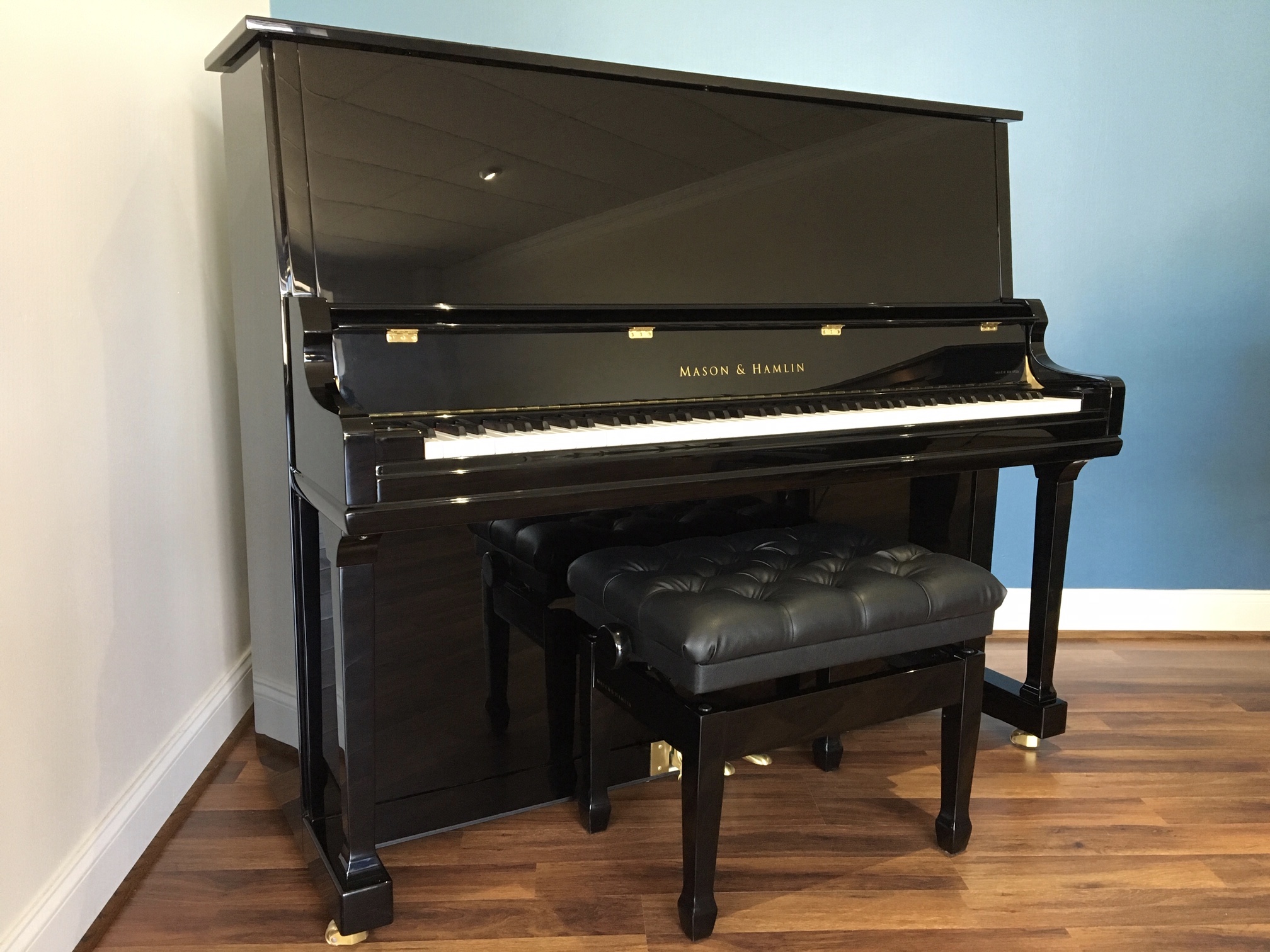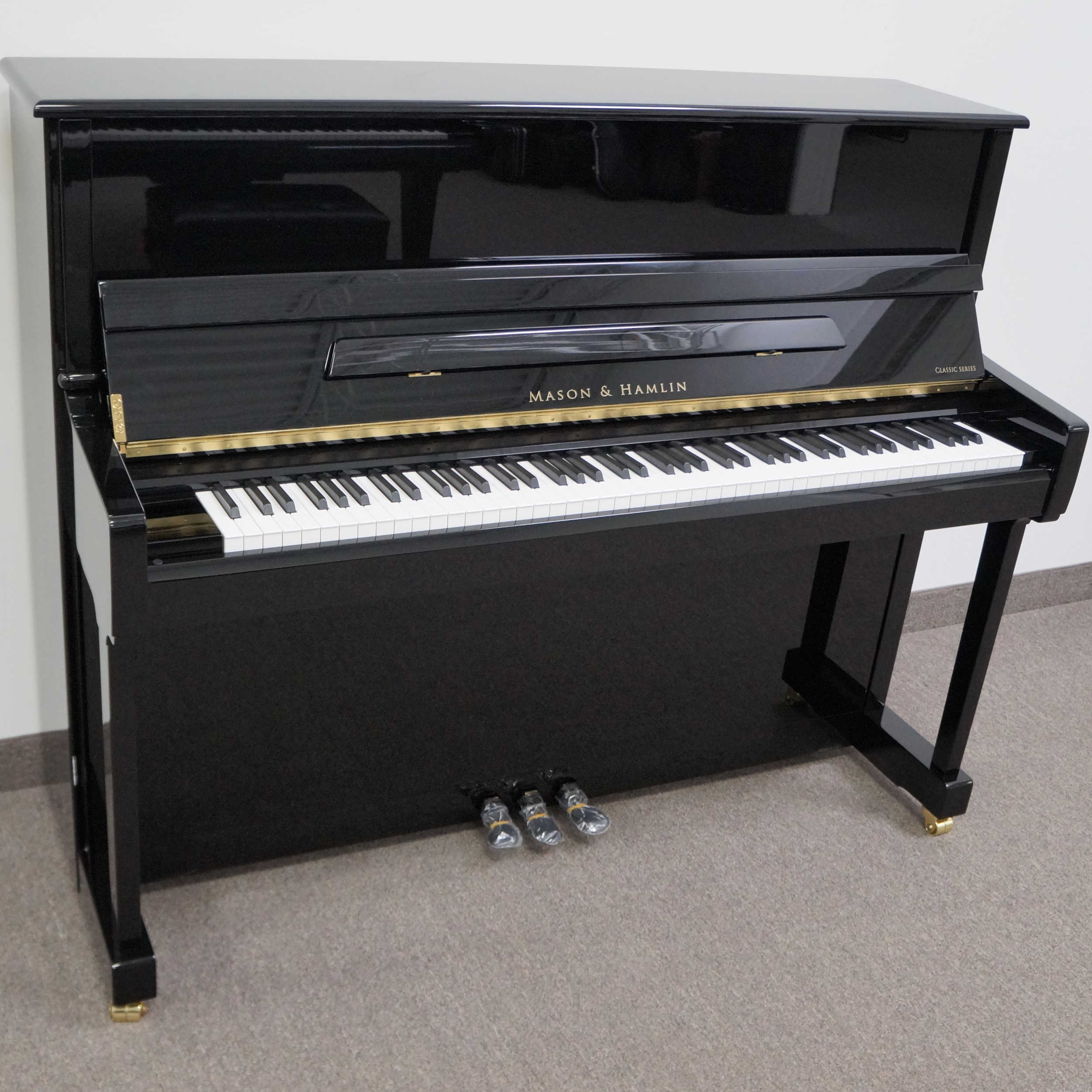

Rod has pointed out that the Walter vertical has an A-1 speaking length equal to much taller pianos and grands up to approximately 5’ 8â€.

It will be a combination of factors working together. The speaking length of A-1 is not the primary arbiter.

This all depends, I think, on the design of the specific pianos, their designer’s intent (if any) and the manufacturer. Also, I generally like Baldwin Hamiltons better than many taller uprights that have shorter A0 speaking lengths than the Hamilton has. I prefer the location of the bass/tenor break (based on the tone in that area) on the Steinway, but I like the bass of the Baldwin much better. (This obviously doesn't apply to straight-strung verticals, the majority of which I don't care for.)) I realize that it's better to have a long backscale and shorter speaking length than a short backscale and a longer speaking length in a vertical piano, but I have played similar-sized verticals with much different speaking length - for example the 52" Baldwin 6000 (54") and 52" Steinway K (46"). (FYI/FWIW, with few exceptions, I usually don't care for vertical pianos in which the speaking length of A0 is more than ~0-1.5" shorter than the total height of the cabinet including the casters. Yes, Nickelodeons / 6-foot tall players with studio or console sized pianos, that means you are disqualified, too. In my opinion, a vertical piano's scale should take advantage of the entire height of the cabinet. I have actually seen spinets put into tall upright cabinets! (That would include the tall uprights, some of which could reach 60" in height, made in the early 1900s, but would not include the 12-foot Klavins upright.) If there was a way to convert upright size to equivalent grand size based on soundboard area and string length, I personally think the smallest grands should be at least the equivalent of about 18-24" longer, or about 20% longer or so, than what the tallest uprights ever made would have been if the same scale was used in a grand. In my own humble opinion, I don't even like the idea of the existence of small grands - ones that there have been uprights made that sounded as good as the grand in the bass section. My 1956 Baldwin Hamilton (probably close to 48" string although I haven't measured it) noticeably beats my mother's 4'11" Young Chang grand. I would even say my old 56" upright, as is (new strings, original (badly worn) hammers) would have beat many 6-foot grands, and if it was totally rebuilt could have been comparable to some 7'6" grands.

Needless to say all the uprights (at least the ones I played) had a better tone in the bass than the baby grand. I remember reading on the forum a couple years ago about a 55.5" upright piano with a 62.5" A0 string.Ĭompare that to my mother's 4'11" Young Chang baby grand and its ~43" A0 string. I used to have a 1913 upright that was 57" tall - it had a 56" A0 string. The 52" Baldwin 6000 uses a 54" A0 string. I believe the Steinway K, as well as a few Asian 52" uprights, also use a 47" or 48" A0 string. My sister's 1921 52" Hallet & Davis upright also has a 48" A0 string. (Some older Hamiltons (pre-1956) used a ~43-44" A0 string.) String length varies widely even on the same size piano, and the same length string is often used in different size pianos.įor example, a recent model Baldwin Hamilton (45" studio) would have an A0 string of about 48 inches.


 0 kommentar(er)
0 kommentar(er)
